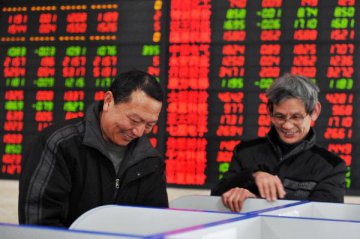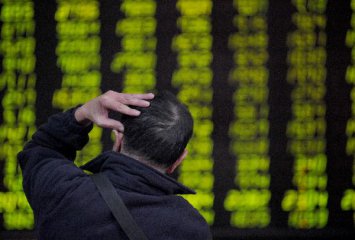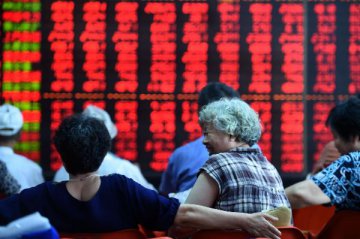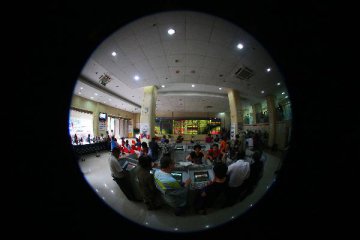
The Central Military Commission (CMC)’s meeting on reforming the armed forces was held from Nov. 24 to 26 in Beijing. It emphasized that deepening defense and military reforms are a crucial step for the military's future, a sure path to a strong military, and a call of the time to realize the Chinese dream as well as a strong military dream. It also pledged to make breakthroughs in overhauling military administrative system and joint command system by 2020, build a stronger army by reform and unswervingly follow the path of strong military with distinctive Chinese features.
The government’s decision on promoting defense and military reforms will be positive news for the military engineering sector in China’s A-share market. Relevant data shows that the total assets of state-owned military enterprises worth around 8 trillion yuan and net assets around 3 trillion yuan. The total assets of military products are around 3 trillion yuan and net assets around 1.5 trillion yuan. The securitization ratio of the total military assets is around 30 percent. Most of core military assets have not been yet securitized, leaving a large room for military assets securitization.
Securitization ratio of military assets estimated to reach above 70 percent by 2020
An analyst at Guotai Junan Securities (601211.SH) believes that the 13th Five-Year Plan period will witness full efforts from the national level in the securitization of military assets. He also anticipates that the securitization ratio in the military sector will rise to above 50 percent in the next three years. Based on the targets for state-owned enterprises (SOEs) reform, Guotai Junan Securities predicts that the securitization ratio of military assets will reach above 70 percent by 2020.
The meeting pointed out that deepening defence and military reforms will be an integrated and revolutionary change. It also decided to adjust and regroup battle zone commands, establish new discipline inspection commission, cut troops by 300,000 and terminate all paid services.
“Military power is a major strategic support for the country to progress from a large country to a powerful one,” financial reviewer Wen Pengchun said in an interview with the Securities Daily, adding that a strong national defense and powerful armed forces will provide not only a guarantee for national security and economic benefits but also a strategic support for the country’s overall strength and competitive, which will improve its political, economic, cultural and diplomatic power.
Military sector to boom in A-share market soon
The military engineering sector has risen by over 70 percent since the beginning of this year. The topic of military reform faded away after the violent fluctuation in A shares, but it is expected to be hot again as the CMC convened the meeting on military reform. It is noteworthy that the mergers and acquisitions in the military engineering industry recently have drawn more attentions from capitals. The restructuring proposal of Sichuan Chengfei Integration Technology Corp. Ltd. (002190.SZ) last year ignited investors’ enthusiasm in the industry. The military engineering sector has seen an increase of 70.55 percent as of Nov. 20 this year and has kept an annual growth of over 50 percent since 2013, outpacing the SSE Composite Index.
Li Xuan, fund manager from UBS SDIC Fund Management Co., Ltd., indicated that the military scientific research institute is the essence of the state-owned enterprises (SOEs) reform, which features high-end military technology, excellent R&D group and strong profitability. If the military groups inject operating businesses of the military scientific research institute into relevant listed companies with the support of the state, this will strengthen the shareholders’ earnings and boost stock prices to go up remarkably.
The CMC’s meeting on military reform is widely believed to benefit national defense industry in the medium and long run. President Xi Jinping underscored the principle of simplification and high efficiency at the meeting. China will cut its troops by 300,000 and administrative and non-combat personnel in the military will be downsized to make the forces more streamlined and efficient. Analysts from Essence Securities revealed in a research report that cutting the troops by 300,000 highlights the informatization and automation of weapon construction and also triggers the military reform. In order to improve the army's fighting capability and efficiency, the military system reform may see a larger-than-expected progress and the central military enterprises reform is the priority of the SOEs reform in the second half of the year.
Essence Securities indicated that the military system reform mainly focuses on combat system and then the development of military and civilian integration. Concerning the joint combat system, assets securitization and military and civilian integration, the following companies are strongly recommended, including Addsino Co., Ltd. (000547.SZ), Beijing Aerospace Changfeng Co., Ltd. (600855.SH), AVIC Aero-Engine Controls Co., Ltd. (000738.SZ), Sichuan Chengfa Aero Science & Technology Co., Ltd. (600391.SH), Avicopter Plc (600038.SH), Glarun Technology Co., Ltd. (600562.SH), North Electro-Optic Co., Ltd. (600184.SH), Huaxun Fangzhou Co., Ltd. (000687.SZ), Sichuan Jiuzhou Electronic Co., Ltd. (000801.SZ), Xinjiang Machinery Research Institute Co., Ltd. (300159.SZ) and Jiangsu Tongda Power Technology Co., Ltd. (002576.SZ).
Translated by Coral Zhong and Vanessa Chen
























Latest comments